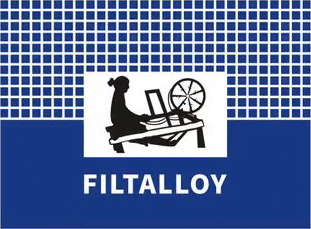Hydrogen production by water electrolysis refers to the dissociation of water molecules under the action of direct current to generate oxygen and hydrogen, which are precipitated from the anode and cathode, respectively. According to the different materials of the electrolyzer diaphragm, usage, operating conditions and technical routes, it is usually divided into alkaline water electrolysis (ALK), proton exchange membrane water electrolysis (PEM), high-temperature solid oxide water electrolysis (SOEC) and anion exchange membrane water electrolysis (AEM). Among them, ALK and PEM are more mature.
At present, ALK is the mainstream application in the market of hydrogen production by water electrolysis. Its advantages are low equipment cost and simple operation, and it is widely used in metallurgy, medicine, energy storage, food and other industries. The disadvantages are high power consumption, large size and poor flexibility. PEM is small in size and high in flexibility. Its large-scale application is hindered by the use of expensive precious metals.
1. Hydrogen Production by Alkaline Electrolysis of Water (ALK)
The alkaline electrolyzer consists of electrodes, electrolyte, and a diaphragm. The electrolytic solution is filled in the electrolyzer. The diaphragm divides the tank into two chambers, the cathode and the anode, and each electrode is placed in it. Under a certain voltage, the current passes between the electrodes, producing oxygen at the anode and hydrogen at the cathode, thereby decomposing water to produce oxygen and hydrogen.
The diaphragm in the electrolyzer is usually asbestos, porous nickel or a polymer composite material. It’s used to separate hydrogen and oxygen. The electrodes are generally made of nickel-based metal materials. The purity of the produced hydrogen is above 99% after purification. The impurities and alkaline mist in it need to be treated. Alkaline electrolyzers generally need to reduce voltage and increase current to improve conversion efficiency.
- Cost: The cost of an alkaline electrolyzer is generally related to its hydrogen production capacity. The greater the production capacity, the higher the cost.
- Electrolyte: The electrolyte of ALK uses potassium hydroxide (KOH) or sodium hydroxide (NaOH) solution (concentration 20%~30%). The technology is mature and the cost is low, suitable for large-scale industrial applications.
- Operation Temperature:70~90℃
- Current density: 2~0.4 A/cm²
- Efficiency: about 60%-75%.
Disadvantages:
Slow startup and slow response. It cannot adapt to fluctuating renewable energy, such as wind power and solar photovoltaic energy.The electrolyte is corrosive and may produce alkaline mist, which is very harmful to the environment.
Application:
Metallurgy, medicine, energy storage, food and other industries.
2. Proton Exchange Membrane Water Electrolysis (PEM)
Unlike ALK, PEM water electrolysis uses perfluorosulfonic acid solid polymer membrane (Nafion), which has good chemical stability, proton conduction, gas separation and other characteristics. It can effectively prevent electron conduction and improve safety.
The main components of PEM are proton exchange membrane, cathode and anode catalyst layer, cathode and anode gas diffusion layer, cathode and anode electrode substrate, etc. Among them, the diffusion layer, catalyst layer and proton exchange membrane constitute the membrane electrode, which is the main place for the electrochemical reaction of the entire electrolyzer. The characteristics and structure of the membrane electrode directly affect the performance and life of PEM. Titanium sintered felt is used for electrode substrate and gas diffusion layer of PEM electrolyzer.
- Current density:1~2 A/cm²
- Overall efficiency: 70%-85%. It has a fast start-up speed, which is suitable for fluctuating sources, such as wind power and photovoltaic power.
- Working pressure: high,3-4MPa
- Hydrogen purity: more than 99.9%, without the process of
- No corrosive liquid, compact structure and small volume
Disadvantages
PEM relies on precious metal catalysts, such as platinum and iridium. This needs high costs, expensive membrane materials, and a short lifespan (about 60,000 to 80,000 hours).
3. High-Temperature Solid Oxide Water Electrolysis (SOEC)
SOEC uses solid oxide as an electrolyte material. The electrochemical performance of the hydrogen production process is improved and the efficiency is high.
SOEC uses calcium titanium oxide, and the electrolyte uses YSE oxygen ion conductor. The all-ceramic structural material avoids the problem of material corrosion. The working environment is high temperature and high humidity. The material selection is limited, which also restricts the application and large-scale promotion.
At present, SOEC technology is still in the experimental stage. In China, the Dalian Institute of Chemical Physics of the Chinese Academy of Sciences, Tsinghua University, and the University of Science and Technology of China are jointly conducting research. The United States, Japan, and the European Union are also studying, mainly including Topsoe, Energy, Bloom, Idaho National Laboratory, Kyocera, Mitsubishi Heavy Industries, Toshiba, etc.
- Electrolyte: Ceramic material, such as yttria-stabilized zirconia (YSZ).
- Operating temperature:700~1000℃. It can use industrial waste heat, and has a high efficiency of up to 90%.
- Does not require precious metal catalysts
- Low power consumption,
- Operate reversibly: It also serves as a fuel cell.
Disadvantages
The material has high requirements for high-temperature resistance and the system starts slowly. The long-term stability is poor and commercialization is still in the demonstration stage.
4. Anion Exchange Membrane Water Electrolysis Hydrogen Production (AEM)
Anion exchange membrane AEM electrolyzer combines the low cost of alkaline electrolyzer with the simplicity and efficiency of PEM. It uses non-precious metal catalysts with low cost and operates under pressure difference. Nickel sintered felt is often used as the diffusion layer. Currently, AEM membranes are not stable under chemical and mechanical conditions, which affects their service life.
The efficiency is usually improved by adjusting the conductivity of the membrane and adding electrolytes. But it will reduce the service life of the membrane.
- Working condition temperature:60-80℃
- Current density:
Disadvantage
The conductivity and chemical stability of the membrane need to be improved. It is currently in the research and development stage.
We compare the above 4 technologies of hydrogen generators by water electrolysis
| Type | Electrolytes | Temperature | Working pressure | Efficiency | Advantages | Disadvantages |
|---|---|---|---|---|---|---|
| ALK | Potassium hydroxide (KOH) solution | 70-90℃ | Normal pressure | 60-75% | Low cost, mature technology, non-corrosive, currently the mainstream application | Slow response It needs long time to start the device. The hydrogen is impure and needs to be de-alkali treated later |
| PEM | Solid proton membrane | 50-80℃ | High pressure | 60-75% | Fast response, high purity, especially suitable for fluctuating energy wind power | It needs precious metal catalysts. High cost |
| SOEC | Ceramic | 700-1000℃ | Normal pressure | High efficiency, low power consumption | Slow response | |
| AEM | Alkaline solid film | 60-80℃ | Middle pressure | 60-70% | Low cost, without percious metal catalyst | Stability needs to be improved |
Application
| ALK | Large-scale industrial hydrogen production |
|---|---|
| PEM | Suitable for renewable energy, such as wind power. Reduce grid pressure and fast response |
| SOEC | Suitable for high-temperature industrial waste heat, high efficiency, currently in the research and development stage |
| AEM | Low cost, future development trend |
Conclusion
Pls check the suitable technology for your hydrogen generator by water electrolysis.


